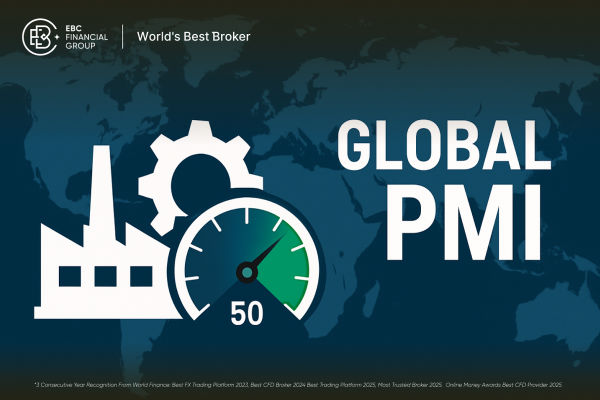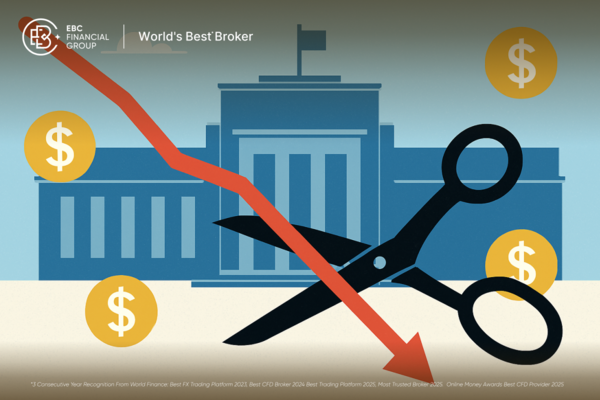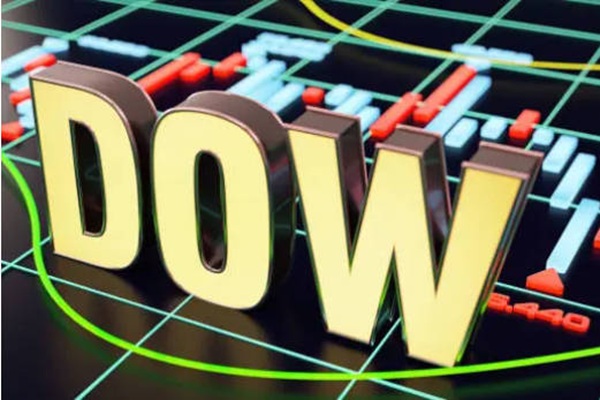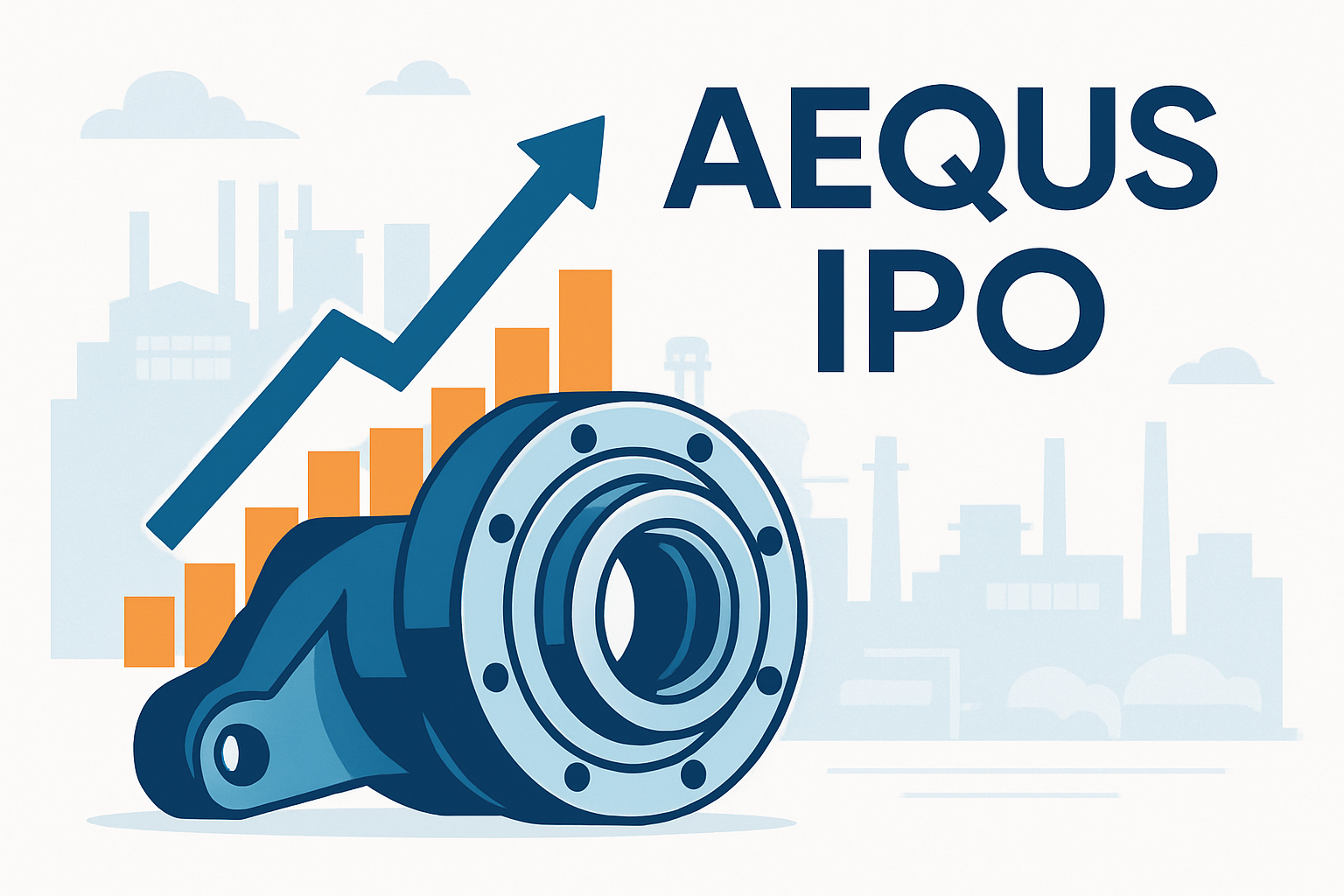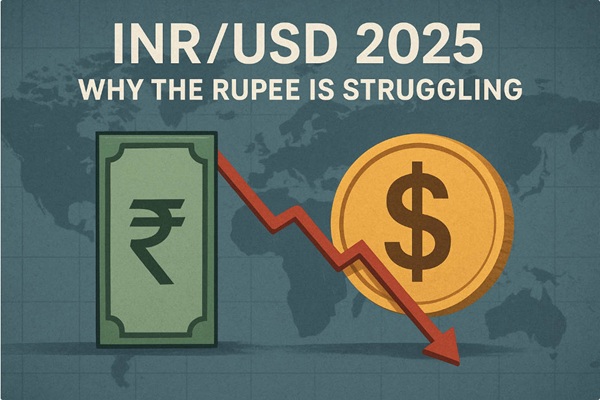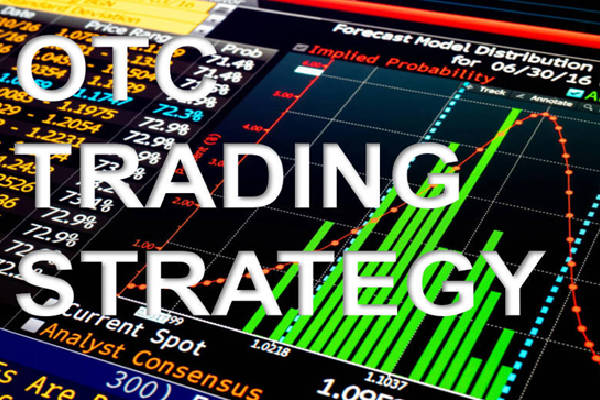Europe at a Crossroads: Calm Consumption, Weak Industry
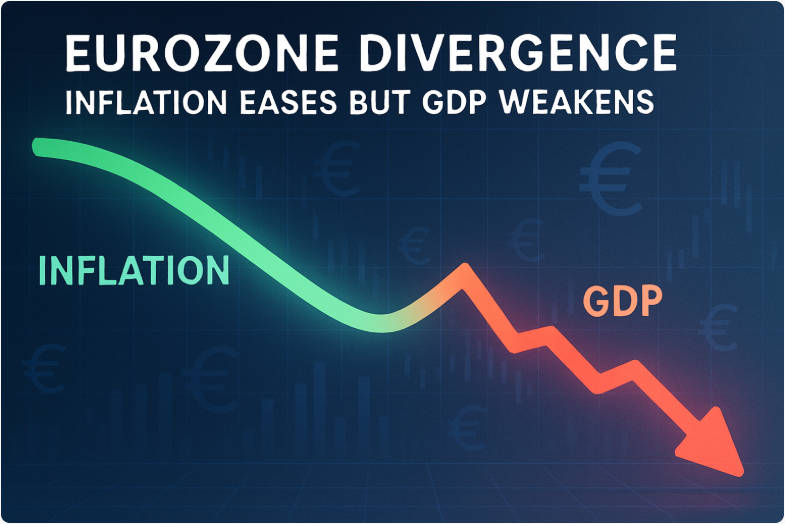
Recent data underscore a widening divergence across major European economies. As inflation cools in Spain and France, supporting household spending, Germany and Switzerland are grappling with slowing GDP and industrial softness.
Meanwhile broader euro‑zone indicators suggest modest but stable growth — a mixed backdrop that leaves investors and the ECB walking a tightrope.
Spain: Inflation Eases, Consumers Get a Breather
Spain's monthly CPI rose by 0.2%, down sharply from 0.7% previously; the harmonised monthly CPI is flat at 0.0%, while the harmonised annual HICP eased to 3.1% (from 3.2%).
This moderation suggests that price pressures are loosening, which may help preserve household purchasing power and support consumption.
Given the less aggressive inflation trajectory, the pressure on ECB‑style policymakers to raise rates further may ease, even as inflation remains above comfort margins in absolute terms.
Implication: Consumers may feel slightly less squeezed on prices, potentially stabilising domestic demand, a key buffer for Spain's economic resilience.
Switzerland: GDP Slump Raises Red Flags, But Leading Signals Flicker
Switzerland's Q3 GDP, often seen as a bellwether for Northern European stability, contracted by –0.5% quarter‑on‑quarter, with growth slowing to +0.5% year‑on‑year.
At the same time, the country's leading economic indicator, such as a "KOF‑style" index, ticked up, suggesting a possible stabilisation ahead.
The drop in output signals real weakness, potentially caused by reduced industrial export demand or domestic softness. However, the increase in forward-looking sentiment indicates that firms may be preparing for stabilisation, although the path remains uncertain. For export-dependent companies, global demand and currency strength will be key factors.
France: Low Inflation, Stable Growth, Consumption Steady
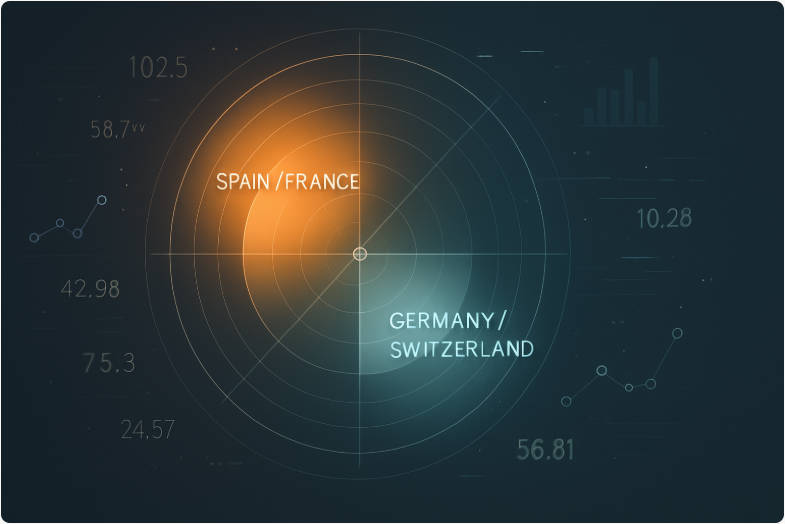
France reports annual CPI at 0.9%, harmonised CPI annual at 0.8%, and harmonised monthly CPI at –0.2%, all of which point to a low-inflation environment.
Its Q3 GDP grew by +0.5% quarter‑on‑quarter and +0.9% year‑on‑year, while household consumption increased by +0.4% both monthly and yearly.
The combination of stable prices and resilient household spending provides a solid foundation for steady, though modest, growth. This indicates that domestic consumption remains a key anchor, potentially offsetting weakness in external demand.
Germany: Price Pressures Up, Retail & Industry Under Pressure
German export and import price indices rose modestly; export prices increased +0.2% MoM / +0.5% YoY, while import prices logged +0.2% MoM / –1.4% YoY.
Meanwhile real retail sales fell by –0.3% MoM, signalling cooling consumer demand. On a year‑on‑year basis retail sales growth remains positive, but the drop month‑on‑month is telling.
At a macro level, business sentiment in Germany appears fragile. Recent survey data show a drop in sentiment (e.g. business‑climate indices), underlining mounting uncertainty among firms.
Weak consumer demand, modest price pressures and declining business confidence paint a gloomy near‑term picture. For an export‑ and manufacturing‑heavy economy like Germany's, sluggish external demand and soft domestic consumption could continue to weigh heavily.
Euro‑wide Indicators: Modest Growth, But Mixed Signals
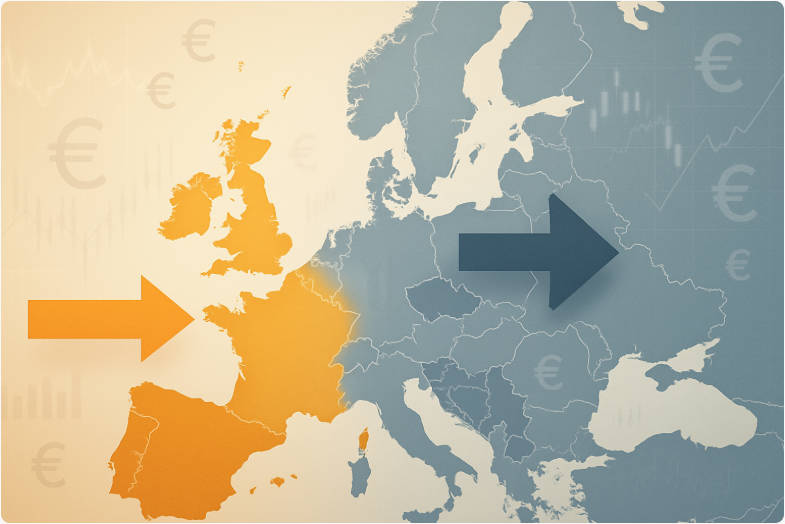
The latest HCOB Flash Eurozone Composite PMI reading for November 2025 was 52.4. down slightly from October's 52.5 — but still above the 50 threshold for expansion.
The services PMI reached 53.1. its strongest in 18 months, suggesting the service sector remains the bloc's main growth engine.
In contrast, manufacturing fell back into contraction territory with a PMI of 49.7. reflecting weak demand and renewed cost pressures.
On the monetary and banking front: credit growth to businesses held steady at 2.9%, household credit growth accelerated to 2.8%, and the broad money supply measure (M3) stood at 2.8% — all consistent with subdued but stable economic momentum.
The euro‑area economy remains afloat, powered primarily by services and consumption. But weakness in manufacturing and export demand, which is aggravated by global trade headwinds, continues to drag on overall growth.
What It Means for ECB, Markets and Investors
For the ECB, the disjointed picture complicates policy decisions. While easing inflation (in parts of the bloc) could nudge policymakers toward rate cuts or pauses, persistent weakness in GDP and manufacturing argues for caution. Indeed, some ECB officials have already cautioned that it is "not yet time" for further rate cuts.
Investors and markets may read this as a "watch‑and‑wait" moment: strong service‑sector and consumer data offer some reassurance, but weak industrial/retail signs leave risks open, especially for export‑ or commodity‑linked sectors.
Corporate borrowers & banks: Stable credit growth and money supply support funding availability, but tighter credit conditions for weaker sectors remain a risk, especially amid global trade uncertainty and supply‑chain disruptions.
Eurozone Latest Data at a Glance
| Country / Indicator |
Data (Nov 28) / Period |
Previous / Expected |
|
Spain — Harmonised CPI (monthly) |
0.0% |
Prev: 0.50%, Exp: –0.2% |
|
Spain — Harmonised CPI (annual) |
3.1% |
Prev: 3.2%, Exp: 2.9% |
|
Spain — CPI (monthly) |
0.2% |
Prev: 0.70%, Exp: 0.1% |
|
Switzerland — GDP (Q3) quarter-on-quarter |
–0.5% |
Prev (rev): +0.2%, Exp: –0.4% |
|
Switzerland — GDP (Q3) year-on-year |
+0.5% |
Prev (rev): +1.3%, Exp: +0.6% |
|
Switzerland — 11-month KOF Leading Indicator |
101.7 |
Prev: 101.3 (rev 101.5), Exp: 101.5 |
|
France — CPI (annual) |
+0.9% |
Prev: 0.90%, Exp: 1.0% |
|
France — Harmonised CPI (annual) |
+0.8% |
Prev: 0.80%, Exp: 1.0% |
|
France — Harmonised CPI (monthly) |
–0.2% |
Prev: 0.10%, Exp: 0.0% |
|
France — CPI (monthly) |
–0.1% |
Prev: 0.10%, Exp: 0.0% |
|
France — PPI (Oct, annual) |
–0.8% |
Prev: 0.10% |
|
France — PPI (Oct, monthly) |
0.0% |
Prev: –0.20% |
|
France — Household consumption (Oct, annual) |
+0.4% |
Prev: –0.30% |
|
France — Household consumption (Oct, monthly) |
+0.4% |
Prev: 0.30% |
|
France — GDP (Q3) quarter-on-quarter (final) |
+0.5% |
Prev: 0.50%, Exp: 0.5% |
|
France — GDP (Q3) year-on-year (final) |
+0.9% |
Prev: 0.90%, Exp: 0.9% |
|
Germany — Export Price Index (Oct, annual) |
+0.5% |
Prev: 0.6% |
|
Germany — Export Price Index (Oct, monthly) |
+0.2% |
Prev: 0.0% |
|
Germany — Import Price Index (Oct, annual) |
–1.4% |
Prev: –1.0% |
|
Germany — Import Price Index (Oct, monthly) |
+0.2% |
Prev: 0.2% |
|
Germany — Real Retail Sales (Oct, monthly) |
–0.3% |
Exp: 0.2%, Prev: 0.2% |
|
Germany — Real Retail Sales (Oct, annual) |
+1.3% |
Exp: 0.1%, Prev: 2.8% |
Frequently Asked Questions
Q1: Why are Spain and France performing better than Germany and Switzerland?
Spain and France benefit from stable consumption and low inflation, which supports domestic demand. Germany and Switzerland rely more on exports and manufacturing, making them vulnerable to global trade slowdowns and weaker industrial activity.
Q2: What does the eurozone divergence mean for the ECB?
Divergent trends complicate ECB policy. Easing inflation in some countries may reduce pressure for rate hikes, but weak GDP and manufacturing in others argue for caution, making a balanced monetary approach critical.
Q3: How is consumer spending affecting eurozone growth?
Strong consumption in Spain and France offsets weak industrial output elsewhere. Household spending drives service sector growth, helping maintain modest overall GDP growth, and provides a stabilising buffer against external demand shocks.
Q4: What risks do Germany and Switzerland face?
Both economies are vulnerable due to reliance on manufacturing and exports. Weak retail and industrial output, combined with global trade uncertainties, could slow GDP growth and negatively impact business confidence in the near term.
Q5: Are inflation pressures easing across Europe?
Inflation is moderating in Spain and France, with lower monthly CPI increases. However, it remains elevated in absolute terms, and price pressures in Germany and Switzerland show mixed trends, keeping policymakers and markets cautious.
Q6: What should investors watch next?
Investors should monitor industrial output, retail trends, and leading indicators like PMI, ESI, and KOF. These metrics reveal early shifts in economic momentum, guiding expectations for eurozone growth, policy, and market movements.
Conclusion: A Europe of Two Economies
Europe today is running on dual tracks. On one side, countries like Spain and France enjoy stable inflation, healthy consumption, and modest growth. On the other side, Germany, Switzerland, and other industry‑heavy regions face slowing exports, weak industrial output, and declining consumer demand, with overall economic momentum weakening.
Although services and households provide some support, structural challenges in manufacturing, export competitiveness, and global trade headwinds make the path ahead uncertain.
For readers, investors, and policymakers, the "divergence" narrative is increasingly important: Europe is no longer a single economy, but a patchwork of different growth engines, each carrying its own risks and resilience.
Disclaimer: This material is for general information purposes only and is not intended as (and should not be considered to be) financial, investment or other advice on which reliance should be placed. No opinion given in the material constitutes a recommendation by EBC or the author that any particular investment, security, transaction or investment strategy is suitable for any specific person.













